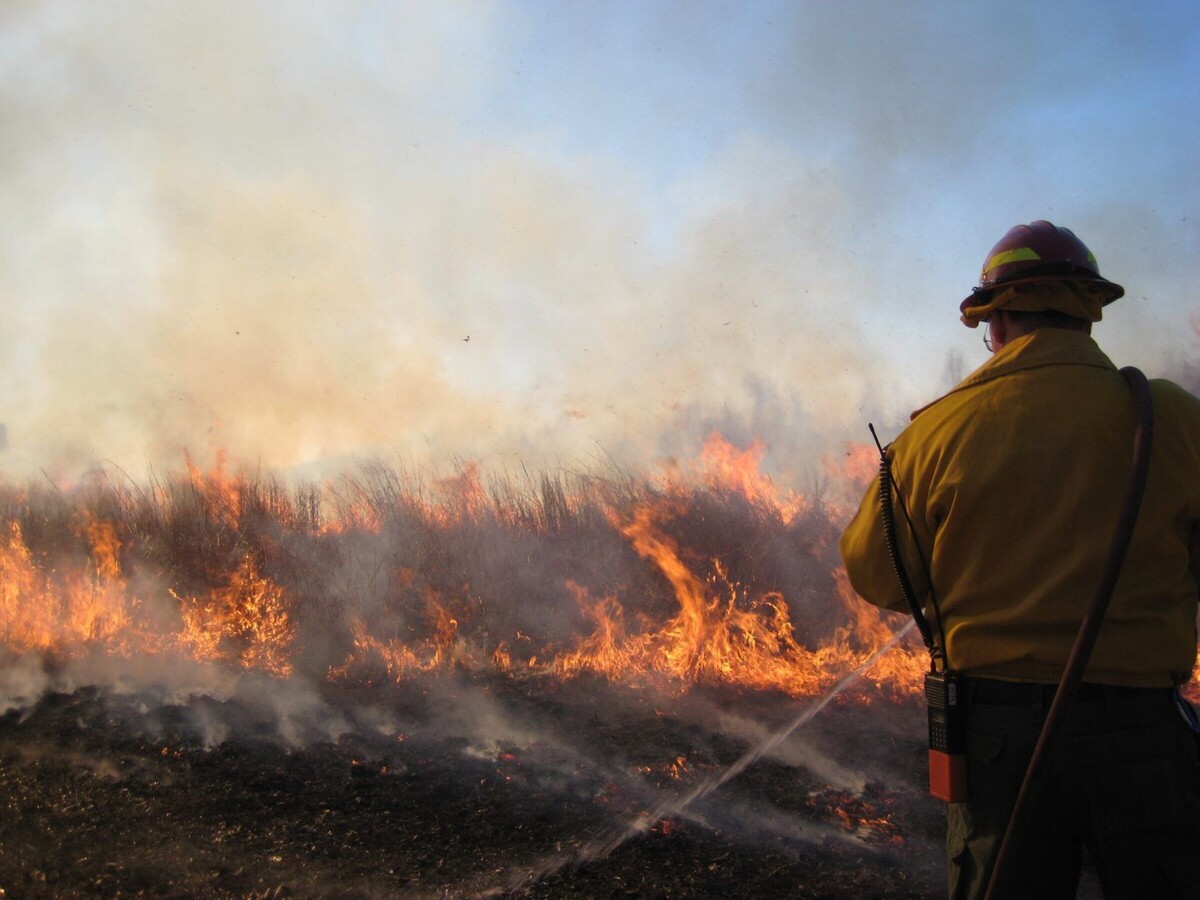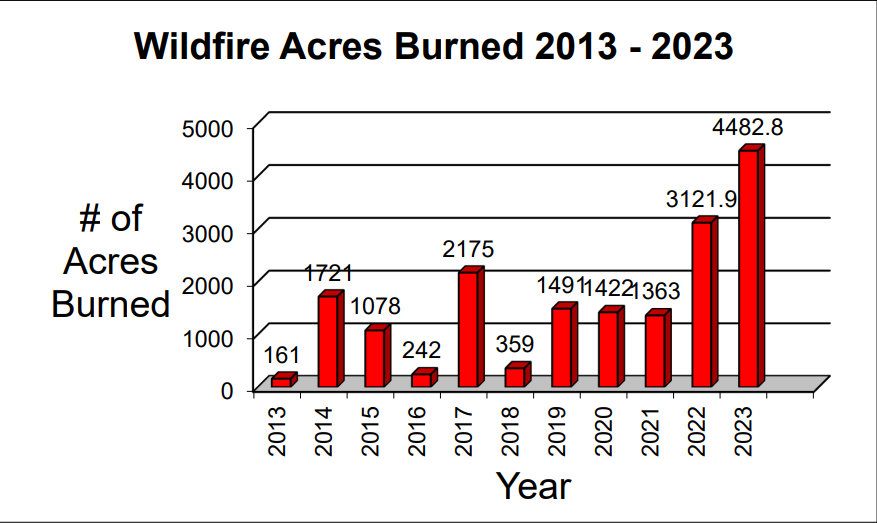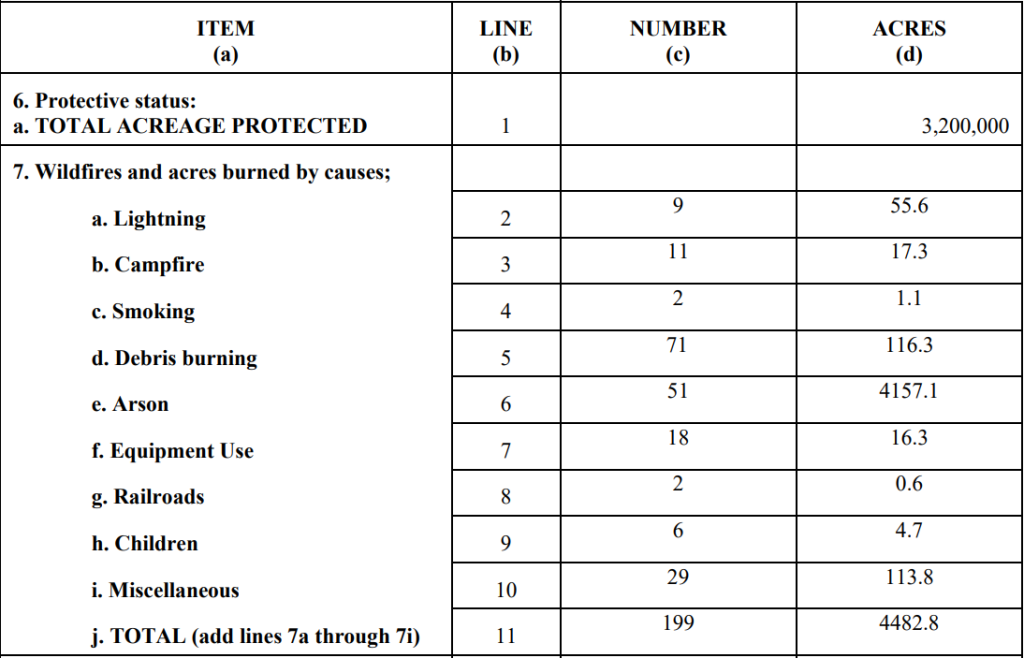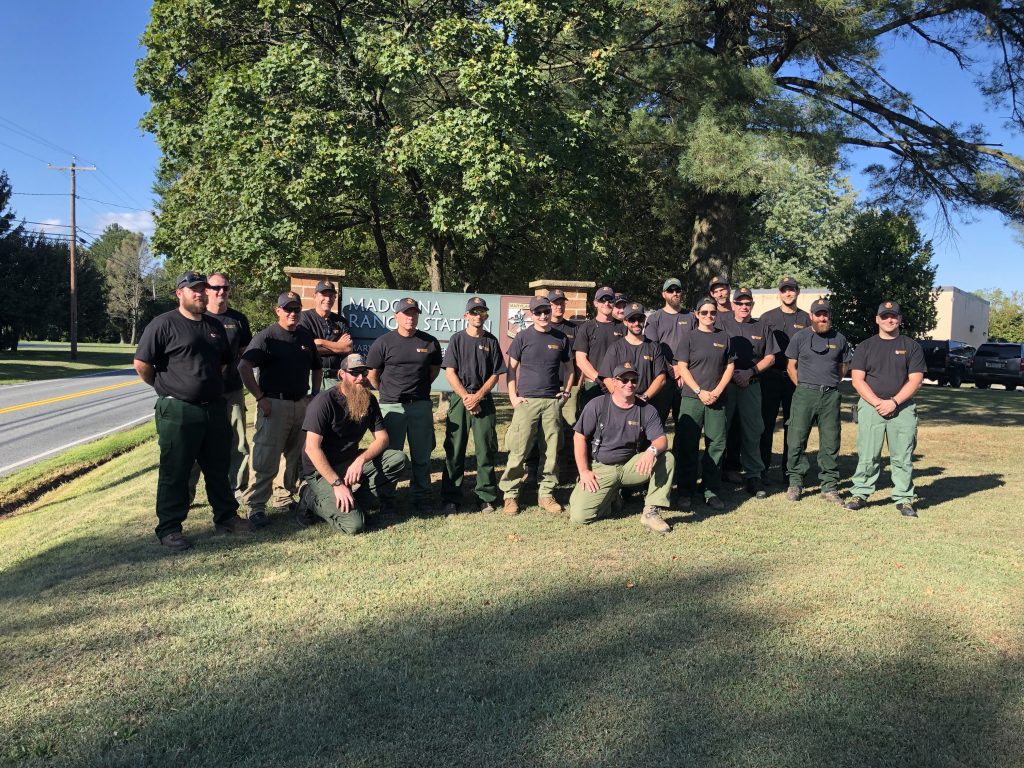Image

Acreage burned by wildfires in 2023 was more than double the 10-year average, with one significant fire responsible for the increase
A Maryland Forest Service firefighter contains a wildfire. DNR File Photo.
The number of wildfires and the acreage of land burned by wildfires in Maryland last year significantly outpaced the 10-year average, according to the Maryland Forest Service’s Annual Wildland Fire Report.
The report, which is being released this month, covers data related to wildfires on 3.2 million acres of land overseen by the Maryland Forest Service.
In 2023, these lands experienced 199 wildfires in 2023 that burned approximately 4,483 acres. Both figures were higher than the 10-year averages of 127.8 wildfires per year and 2,376 acres burned, according to Forest Service data.

Wildfire acres burned by year in Maryland. Credit: Maryland Forest Service
February 2023 was the worst month for wildfires in the state in terms of acreage burned, with approximately 3,760 acres or about 84 percent of the total wildfire acreage burned in 2023. About 517 acres burned in April, the second worst month for wildfires last year, while all other months experienced less than 100 acres burned.
The most common cause of wildfires last year was debris burning, which resulted in 71 wildfires, followed by arson, which was identified as the cause of 51 wildfires. Arson-related fires caused by far the most acreage to burn, with those fires resulting in an estimated 4,157 acres burned in 2023–or about 93 percent of the total. Debris burning resulted in about 116 acres burned by wildfires.

Chart showing causes of wildfires in Maryland and the total acreage burned by cause. Credit: Maryland Forest Service
One wildfire caused the majority of the acreage that burned in 2023. A February fire in Dorchester County that was believed to be caused by arson burned 2,592 acres of marsh land in Fishing Bay Wildlife Management Area. Other than that one, only three other wildfires individually resulted in more than 300 acres burned. Two of those fires were also marsh fires, while a third was a highly publicized fire in Soldiers Delight Natural Environmental Area near Owings Mills that burned about 321 acres in April. Together, those three fires burned about 1,327 acres.
No one was injured in any of the wildfires in 2023, and no significant private property damage was reported to the Maryland Forest Service related to the wildfires.
“While Maryland experienced an above-average number of wildfires in 2023, the majority of the acreage burned was caused by one significant arson fire in Dorchester County that was contained,” said Chris Robertson, State Fire Supervisor for the Maryland Forest Service. “However, unpredictable and often hotter weather conditions experienced in the region in recent years has increased the general risk of wildfires in Maryland, so we ask that the public remain vigilant and use safe fire practices.”
The Maryland Department of Natural Resources reminds residents that they can help prevent wildfires by composting rather than burning leaves or other yard debris, ensuring that camp or backyard fires are properly extinguished, and educating children about the dangers of lighters, matches, and wildfires.
Residents whose properties may be at risk of wildfires can use “Firewise” techniques to keep their homes and other buildings safe from wildfire. These techniques include clearing flammable material away from structures, using fire-resistant building materials when possible, and maintaining a 30-foot cleared buffer around your home.
The Maryland Forest Service is also expanding its use of prescribed burns to reduce wildfire risk on land susceptible to fire. In 2023, Maryland Forest Service and partner organizations conducted 118 prescribed fires covering approximately 9,188 acres.
Prescribed burns, also called controlled burns, have become an increasingly common strategy for land management and wildfire prevention. Large wildfires are not as much of a concern in Maryland as they are in western states, but the prescribed burns conducted in Maryland help reduce the dead woody debris and shrub layer that could serve as fuel for unintended fires.
Larger trees that are fire-adapted with thicker bark and resprouting ability, such as oaks, withstand ground-level fires. The bare mineral soil left behind by prescribed burns can stimulate successful regeneration from the seed bank. The burns can also help create successional habitat composed of grasses, shrubs, and other low-lying vegetation that provide new habitat for wildlife such as pollinators and ground-nesting birds, including quail and field sparrows.

Maryland Forest Service wildfire firefighters. DNR File Photo.